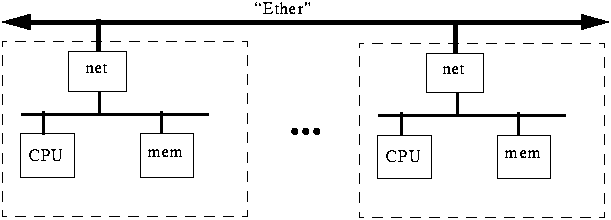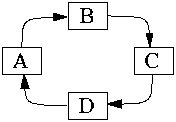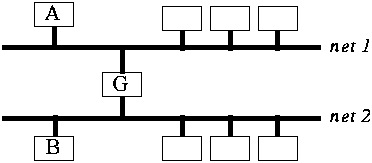![]()
ISO-OSI Layers
Local Area Networks
Wide Area Networks
Switching Techniques
The network layers defined by the International Standards Organization for the Open Systems Interconnection (OSI) are:
![]() Needs for higher bandwidth for audio/video data
Needs for higher bandwidth for audio/video data
![]() Retransmission as a method for error correction is not useful
for multimedia (a late frame in audio/video is a lost frame).
Error control at this layer will be dropped in e.g., ATM networks.
Retransmission as a method for error correction is not useful
for multimedia (a late frame in audio/video is a lost frame).
Error control at this layer will be dropped in e.g., ATM networks.
![]() Quality of Service (QoS) parameters defined for
multimedia data transmission. Resource reservation based on
QoS will guarantee small jitter and correct packet ordering.
Quality of Service (QoS) parameters defined for
multimedia data transmission. Resource reservation based on
QoS will guarantee small jitter and correct packet ordering.
![]() QoS and synchronization of the multimedia data need to be enhanced.
QoS and synchronization of the multimedia data need to be enhanced.
![]() TCP/IP and ATM networks do not explicitly have this layer, it is mostly
folded into Transport Layer.
TCP/IP and ATM networks do not explicitly have this layer, it is mostly
folded into Transport Layer.
![]() In TCP/IP and ATM networks, this layer is merged into Application Layer.
In TCP/IP and ATM networks, this layer is merged into Application Layer.
![]() Increasing varieties of applications, e.g., HTTP, MIME, video-on-demand
Increasing varieties of applications, e.g., HTTP, MIME, video-on-demand

--> CSMA/CD (Carrier Sense, Multiple Access/Collision Detection).

To transmit, a station grabs the token, transmits, releases the token.
Regulates access to networks by only allowing one unit to broadcast at a time.
A station can transmit a frame at a given priority if it can grab a token with an equal or lower priority. Otherwise, make reservation.
It has a dual ring topology with primary ring for data transmission and secondary ring for fault tolerance (See Figure 10.3 from the Steinmetz and Nahrstedt book.)
The synchronous mode enables bandwidth reservation and the asynchronous mode is similar to the Token Ring protocol.
Between LAN and WAN, there is also the Metropolitan Area Network (MAN)
Layer Example
----- -------
-----------------
| Application | FTP, Telnet, SMTP, X-Windows, MIME, HTTP
-----------------
| Transport | UDP, TCP, TP4, Routing
-----------------
| Internet | IGMP, IP, CLNP
-----------------
| Subnetwork | Ethernet, X.25, FDDI, Token Ring
-----------------
| Data Link | HDLC, PPP, SLIP
-----------------
| Physical | RS-232, V.35, Fiber Optic
-----------------

Solution: Use machine G to forward the message. In other words, a program running on G takes the message from A and routes it to B. G is called a gateway, and the program is called a router.
Solution: Don't use B's Ethernet address. Use another name for B (it's IP address) and provide a translation table from IP addresses to Ethernet addresses (called a routing table).
UDP adds port number (16 bit identifier) to packet to indicate destination process
Higher level protocols must then take care of retransmission, divide and reassemble packets, flow control, congestion avoidance, etc.

If ACK not received in a little while (the retransmission timeout, or RTO), resend segment.
![]() Reference: W. Stallings, "Data and Computer Communications", 4th
ed., Macmillan, 1994.
Reference: W. Stallings, "Data and Computer Communications", 4th
ed., Macmillan, 1994.
Fixed bit rate Variable bit rate
<---------------------------------------------------->
Simplicity Complexity
-----+---------------+---------------+---------------+--------------+---
Circuit Multirate Cell Relay Frame Packet
Switching Circuit (Asynchronous Relay Switching
Switching Transfer Mode)
Top | Chap 5 | CMPT 365 Home Page | CS